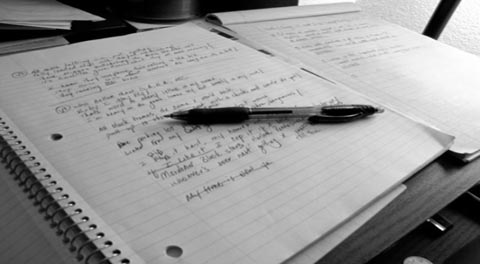For Every Dark Night, There’s A Brighter Day
“Everyone is handed adversity in life. No one’s journey is easy. It’s how they handle it that makes people unique.” – Kevin Conroy (American actor).
When we talk about inspiring books, we just have to take a first look to the ones which show us reality. That is the case of The Pact: Three Young Black Men Make a Promise and Fulfill a Dream, a 2002 inspiring and life-changing bestseller by Drs. Sampson Davis, George Jenkins, and Rameck Hunt that reveals their particular story of beating the odds and becoming doctors by the power of their friendship and their own determination in the tough streets of Newark, New Jersey. Dr. George Jenkins, who is one of the three kindred spirits who made the resolution of becoming doctors, always kept his dream running despite the bad influences that surrounded him. In order to overcome adversity and comply the pact he made with his two friends of becoming doctors together, George transforms his thinking by creating positive affirmations, improves his self-esteem, and adjusts his behavior by being determinate in his desires.
George must modify the way he thinks in order to break up the defeatist thoughts from his goal, and that means he must be creative with positive affirmations that encourage him to stay focused on his objective. In Chapter 7, which is entitled “Hope,” George was invited to Seton Hall College for an interview. Despite doing well in high school, he was still untrusting about his capability. On his way to college, George admits he felt the shock of seeing a different reality he was used to; moreover, he acknowledges, “I kept wondering whether I could really make it in college. I thought I’d have to be a genius to get in and I was scared to death” (102). George thought that maybe he and his friends wouldn’t fit into that new world that demands more effort and discipline. But he alters his thinking by receiving confidence from Carla Dickson, the student development specialist for the program that interviewed him, and his subsequent acceptance to college. After he received the acceptance letter, George admits, “For me, getting accepted into Seton Hall relieved the pressure of not knowing for sure what would happen next” (104). Basically, George is claiming that being admitted to college helped him gain more self-confidence, and it kept moving him forward. Essentially, this case demonstrates that appreciating someone’s abilities or qualities can make an enormous change in the person’s life. And in relation to George, confidence like he received helped him to became stronger and plan his future as a medical student.
George also changed his way of thinking by realizing he wouldn’t be able to achieve his goal if he still dealt with people who didn’t help him positively in the process. In Chapter 14, entitled “Old Ties,” George was living in his old apartment in Newark, and despite all the help that he was giving to his neighborhood’s troublemaker friends, he decided to stop helping them and stayed focused on his objective. When he made his mind up, he declares, “I knew then that it was time to clean house. I asked all three of them to leave. I had helped them as much as I could” (195). I can relate to George’s decision of taking a step aside from those types of people in his life, and like him, I also felt the necessity to think of myself first before others. By the time I was finishing high school, my goal was apply to the university and keep studying. However, my bad influential friends, just like George’s, didn’t allow me to prepare myself and work towards my desire. Even with the good relationship that I had with those friends, I realized if I have to study harder in order to be accepted at a university, I must leave them behind. Thankfully, I did it.
Thinking differently is one thing, but the emotional passage in one’s life can be really difficult, and for George, this was certainly true. At University High, George experienced an undisciplined system that gave him a freedom that wasn’t needed for that moment of his life. When he talked about the type of teachers he had in high school, he describes, “They expected and accepted mediocrity or less, and unfortunately, we usually gave no more” (63). Most of the teachers couldn’t deal with the kids, so they let them do whatever they want. Emotionally, George didn’t felt challenged, and his academic performance began to slip until he heard about the EOP, which is a program that provides money for tuition, counseling, housing and tutoring. When the state added the Pre-Medical/Pre-Dental Plus Program at Seton Hall under the EOP, and he heard it about from a recruiter, George admits, “I could hardly believe my ears. I thought to myself: ‘Free college. Free tutoring. Help getting into dental school. This is it! This is the way to do what I´ve always wanted to do’” (71). In making this comment, George confirms that he was going to college without having a real plan, and he was excited about it. Basically, this part of the chapter proves that George found a motivation that kept his dream running. Furthermore, he improved his self-confidence by making an emotional bond of trust with his two friends of doing that together.
In addition to George’s emotional growth, there is a person who played an important role on his inner strength. I’m referring to Carla Dickson. She was the counselor who recommended him for the program, and she offered encouragement since day one. Dickson was also known as a woman who always “was working in our self-esteem” (117). She became a big support for George and his two friends; in fact, Carla gave them the chance of achieving their goals. She also taught George the importance of believing in himself, emphasizing since the first day of class, “You are doctors. You guys have to visualize yourselves as doctors” (116). In other words, she worked on the emotional aspect before anything, showing a way of feeling proud of what you are. Essentially, Dickson believed their self-esteem was the weakest part of themselves, so she tried to transform their low confidences into powerful self-respect. This example of emotional progression was a significant step for George’s success.
Although thinking and emotional alterations were totally needed to succeed, the most important modification that George made was when he demonstrated that his behavior could be more determined. Concluding Chapter 11, entitled “Rap,” George realized that becoming a professional rapper was not as impossible as he thought; nevertheless, he didn’t quit his studies for something temporary. While he was arguing with Rameck about their possible future as rappers, George responds, “`Look, how many broke rappers are out there, man? One day they’re big and hot with the biggest studio, and the next day, they’re not. Man, you’re on your way to medical school. You want to drop medical school for this? I’m on my way to dental school. I’m not dropping dental school for this. You’re crazy’” (161). Reading this particular chapter reminded me my dream of becoming a professional Muay Thai fighter a couple years ago. I was sure, like George at some point, that with effort I could achieve great things in that field. However, just like George admits, “That was it. Our career as rappers came to an abrupt halt” (162), I realized that my biggest goal was, and still is, get a university degree; I won’t stop working on that.
George went through thinking transformations, emotional changes, and behavioral actions, not only to reject the myth that young, poor, black teenagers from the streets of Newark could not dream big, but to live and be the dentist he dreamed of being. The book in fact, George’s several progressions and subsequent success, inspired me to believe in myself, and I think I’m already halfway there. I really recommend this book; it taught me to open my mind and realize that there is no education like adversity.




